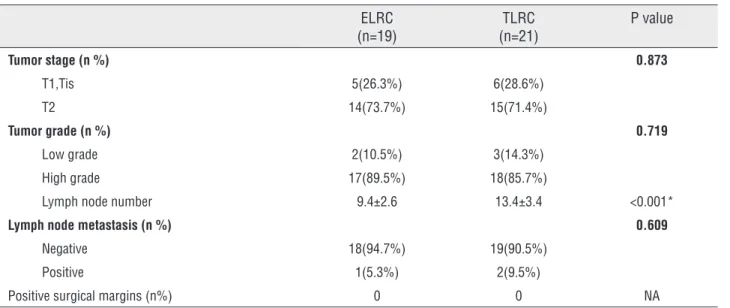Int. braz j urol. vol.42 número4
Texto
Imagem



Documentos relacionados
Men with an isolated positive bladder neck margin after radical prostatectomy experienced a 12-year biochemical recurrence-free survival of 37% and cancer speciic survival of
Context: This review focuses on the prevention and management of complications following radical cystectomy (RC) for bladder cancer (BCa).. OBJECTIVE: We review the current
Purpose: Describe morbidity and survival in patients older than 80 years with muscle invasive bladder cancer (MIBC) treated with radical cystectomy (RC) or transurethral
Conclusion: Robotic salvage pelvic lymph node dissection is an effective option for treatment of patients with bioche- mical recurrence after radical prostatectomy and only pelvic
In conclusion, radical prostatectomy with pelvic lymph node dissection in the setting of locally advanced prostate cancer is associated with durable loco-regional control and
Doctors Wei and Collegues from China performed on page 747 an interesting review study about the Bipolar transurethral enucleation and resection of the prostate (B-TUERP)
Association between the number of dissected lymph nodes during pelvic lymphadenectomy and cancer-specific survival in patients with lymph node- negative urothelial carcinoma of
Extent of lymph node dissection and number of nodes retrieved have important im- pact on outcome in patients with muscle invasive bladder cancer (8-10).. During cystectomy more